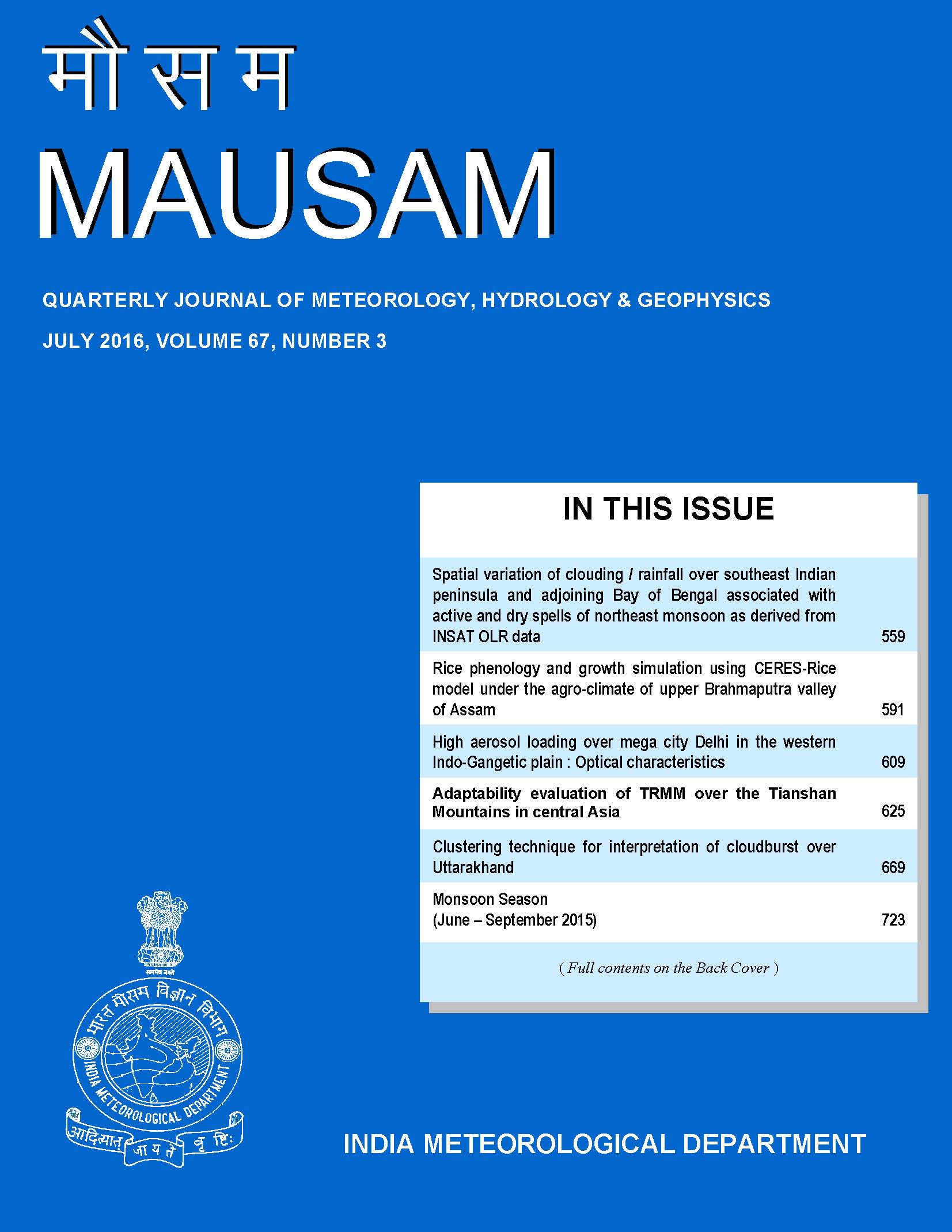Climatology and trend of cold waves over India during 1971-2010
DOI:
https://doi.org/10.54302/mausam.v67i3.1384Abstract
Using Cold Wave (CW) information of 86 stations from Indian main land during the cold weather season (November to March) for the last 40 years (1971-2010), various statistical aspects of cold waves (CWs) and severe cold waves (SCWs) such as climatology and trend were examined. The link of CWs/SCWs with ENSO phases (La Nina & El Nino) was also examined. It was observed that many stations from north, northwest, east and central India together named as core CW zone (CCZ) experienced highest number of CW/SCW waves with relatively higher frequency during January. Noticeable decrease (increase) in the frequency and spatial coverage of CW/SCW days compared to their climatological values were observed during the El Nino (La Nina) years. There were significant decreasing trends in the CW/SCW days over most of the stations from CCZ. The total number of CW/SCW days/per decade over CCZ showed noticeable decrease during the recent decades 1991-2000 and 2001-2010, which coincided with the warmest decades for the country as well as for the globe. Associated with intense and persistent CW/SCW events, large human mortality were reported during some years of the study period.
Downloads
Published
How to Cite
Issue
Section
License
Copyright (c) 2021 MAUSAM

This work is licensed under a Creative Commons Attribution-NonCommercial 4.0 International License.
All articles published by MAUSAM are licensed under the Creative Commons Attribution 4.0 International License. This permits anyone.
Anyone is free:
- To Share - to copy, distribute and transmit the work
- To Remix - to adapt the work.
Under the following conditions:
- Share - copy and redistribute the material in any medium or format
- Adapt - remix, transform, and build upon the material for any purpose, even
commercially.



